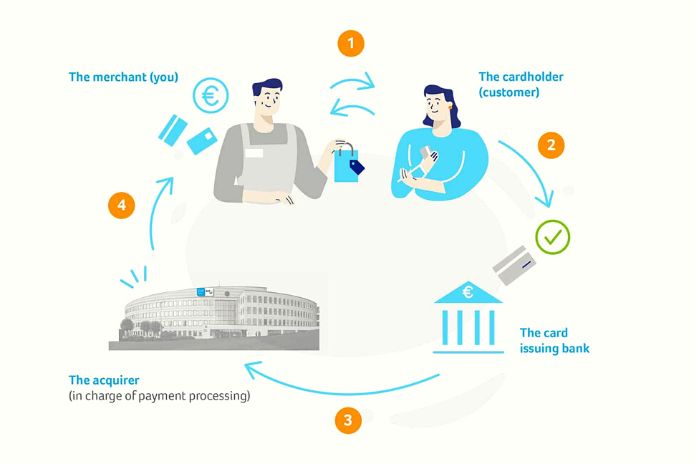
Contactless installments compare to installments that can be made through a framework that doesn’t need direct contact between the installment instruments (for example, the charge card or different gadgets) and the terminals approved to get installment (or TPE terminal). For this reason, this installment strategy bears the specific name of “contactless”; it is sufficient to move toward the card or the phone of the TPE genuinely, and the installment is done.
Various reports, including the latest “Contactless Installments: Market status, Seller Examination, Market Conjectures 2020-2024″ from Juniper Exploration, feature how installments through cell phones are becoming progressively famous. More normal all over the planet.
It is expected that before the current year’s over, the worth of exchanges made through contactless installments will reach, around the world, 1.8 billion bucks to arrive at 5.5 billion Euros by 2024, assuming the pattern present progresses forward its way. In this article, we will make sense of precisely what nearby portable installment is and the way that Google Pay and Apple Pay work, the two installment frameworks available from versatile.
Local Mobile Payment: What Is It?
The term “local mobile payment” designates local electronic payments, i.e., those payments which require physical proximity between the purchaser and the seller of the product or service that is the subject of the transaction. The latter benefits from the advantages of the contactless and cardless system through a mobile device operating by short-range wireless transmission.
The technologies on which this type of operation is based are NFC (Near Field Communication): and services such as Apple Pay and Google Pay. Bring the mobile to the payment terminal without touching anything to complete the transaction. Additionally, payments enabled by two-dimensional codes like QR codes and Data Matrix are considered proximity payments in the same way as mobile payment services that use geolocation and telephone number.
Local mobile payment now also works with vending machines; it also allows cash to be withdrawn from ATM terminals without a card using a smartphone. This is an essential facility offered by more and more banks. Thanks to this system, initiating the operation from the bank’s mobile application and concluding the process from the ATM screen is possible.
Contactless Payment With Google Pay
Google Pay is a digital wallet open to all mobiles (Android and iOS), designed by Google to group the user’s credit and withdrawal cards in a single application. Anyone who registers their payment card on the Google Pay application no longer needs to take it everywhere with them, to the supermarket or other shops, as long as it is possible to pay there via Google Pay, thanks to NFC technology.
Through the Big G payment system, it has become possible to make purchases on Play Store (payment application or additional service added to existing applications), e-commerce sites, and online stores of well-known brands. In addition, the Google service has introduced the functionality of boarding passes and access tickets to events, including concerts.
Let’s go into more detail on how these services work: to use Google Pay, it is necessary to link the application to a credit, debit, or prepaid card (Maestro, MasterCard, Visa) issued by any bank. Or credit institutions that have joined this payment system. Users can also activate the service directly in the mobile banking application.
Pay Contactless With Apple Pay
Apple Pay is a service that allows you to pay in physical and online stores, on compatible applications and websites via Safari using an iPhone, iPad, Apple Watch, or Mac. All this quickly, easily, and securely using NDC technology, linking the point of sale’s credit, debit, or loyalty card to the Apple account. To learn more about how to pay with Apple Pay, click here.
When paying for a purchase in a shop or at the supermarket, all you have to do is position your iPhone near the payment terminal, and the payment will be made. When subscribing to the Apple Pay service, the user must enter their payment card data: the data will not be stored either on the device or on other Apple servers since a cryptographic code will be assigned to the user (the famous “Device Account Number”), saved in the “Secure Element” data of the payment device.
The authorization of each transaction takes place through a dynamic code that only applies to a single purchase, thanks to the implementation of the Mastercard Digital Enablement Service (MDES) or the online payment authorization service of MasterCard. It is a “tokenization” system that complies with the specific criteria of the Europay Mastercard Visa (EMV) system. The “Touch ID” functionality completes the security barriers, introducing a biometric identification element of the user before the authorization of the transaction.
Finom Bank Cards For Contactless Payment
Finom offers payment debit cards for professionals and small and medium business owners with 0% commission and up to 3% cashback. When you open a Finom business account, you get your virtual and physical bank cards to make all your purchases directly or through payment apps. If you already have a Finom payment card, you can easily add it to Apple Pay and Google Pay.
Also Read: 10 Small Business Branding Tips
